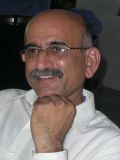Social Media wont save Railways by Firstpost
Train accidents in the recent past, unending passenger complaints, and falling revenues are some of the issues that will haunt the railway minister in the upcoming Union Budget presentation on 1 February. This will be the first time in the history of Independent India that the Railway Budget will be presented along with the Union Budget 2017; both by the finance minister.
One of the chief concerns of the railway minister would be the unhealthy operating ratio. Last year’s Railway Budget had set the operating ratio target at 92 percent for the financial year 2016-17, which is sure to be missed giving a dismal picture of the performance of Indian Railways. According to sources in the ministry, Indian Railways is expected to have an operating ratio of 94 percent for the current fiscal.
Operating ratio is the barometer to judge the financial health of the railways. Usually, 90 percent operating ratio is an indicator of good health, which means the Indian railway is spending 90 paise to earn 100 paise. A lower operating ratio is regarded as an indicator of a better financial health of the system.
In the first week of January, Prabhu had admitted, "We have got a huge liability in the form of Seventh Pay Commission award and the growth in coal and steel loading has been flat. In view of this, I think we’ve done a decent job by controlling the operating ratio at 94 percent."
However, the situation seems to be greyer than expected as former top railway board officials and experts feel that the operating ratio will exceed even 94 percent mark. And, this will be enough to say that the financial health of Indian Railways is poor.
"It appears that the operating ratio is likely to cross 100 percent mark, which is quite bad. I don’t know how they will achieve both earnings and tonnage growth," Vivek Sahai, former chairman, Railway Board, told Firstpost.
Operating ratio has proved to be the Achilles heel for the railways this fiscal. In June 2016, the sudden resignation of Railway Board's financial commissioner Sanjoy Mookerjee, three months ahead of his retirement, seeking "voluntary retirement" came as a big "surprise and shocking" to many.
Though Mookerjee, a 1978-batch Indian Railway Accounts Service (IRAS) officer, had chosen to remain tight-lipped throughout on the issue, sources in the railways didn’t rule out the possibility of "strong disagreement on policy issues with the top leadership".
The financial commissioner, who’s also an ex-officio secretary to the Government of India, plays a vital role as the topmost authority in managing finances of Indian Railways, including the Railway Budget.
“Maybe, Mookerjee will speak some day, but we were shocked when he opted for voluntary retirement. We wanted him to continue as he was not only immensely popular but an efficient financial administrator," one of the top railway officials, who worked with Mookerjee, remarked.
Sources said that Mookerjee’s tenure had the challenges of managing the burden of the Seventh Pay Commission, unprecedented external borrowings for infrastructure works, spending on projects, decline in earnings from freights and slowing of passenger traffic.
"Amidst all these pressing factors, managing the operating ratio was a critical issue. Mookerjee was at the helm of budget planning and preparation. Soon after he quit, his position was taken over by other financial commissioners, but his exit gave a negative message as he had played an instrumental role in reining in the railway’s costs at a time when the revenues were down," the source added.
Arunendra Kumar, former chairman of the Railway Board while speaking to Firstpost cautioned: “Operating ratio of this fiscal will go way beyond 94 percent, which is financially alarming, especially when earnings have gone down drastically. The challenge is quite huge before railways.”
Besides operating ratio, other issues such as safety and customer satisfaction are likely to haunt the Railway Budget 2017 as well. The country has witnessed a series of train accidents in the recent past that has raised questions on passenger safety. The ministry’s social media presence notwithstanding, passengers too have taken to social media to gripe about poor amenities on board, including those on premium trains such as the Rajdhani and the Shatabdi.
A large number of complaints have been made related to choked toilets, lack of water supply, quality of bedrolls and food supplied to passengers on board.
“Use of social media like Twitter, etc, is good for improving communication but it doesn’t improve services provided to passengers and their safety. There are also complaints of slow work on doubling lines and delays in opening new ones in some parts. It needs real hard work on the ground,” another former chairman of the Railway Board remarked on the condition of anonymity.
“Adequate supervision and finance go hand-in-hand in providing better safety and customer satisfaction,” said Sahai. more













